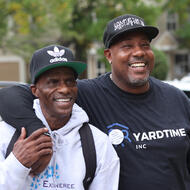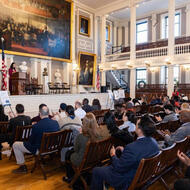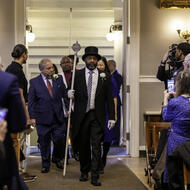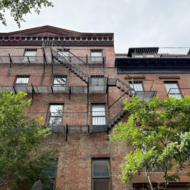Mayor's Office
Mayor Michelle Wu is working to make Boston a home for everyone.
Since taking office, she has invested more in making housing affordable than any other administration in Boston’s history. In her first full year as mayor, gun violence fell to the lowest level on record—and has continued to fall every year since. She promised a summer job to every BPS student who wanted one—and delivered, and has expanded Universal Pre-K to serve more children and families than ever before.
As a Boston Public Schools mom, a daughter of immigrants, and an MBTA commuter, Mayor Wu is investing in building community for Boston’s brightest future.
Executive Orders
executive orders- January 26, 2023 - An Order Establishing the Boston Planning Advisory Council
- January 30, 2023 - An Executive Order Relative to Resiliency, Affordability and Equity in Planning and Development in the City of Boston
- April 14, 2023 - Executive Order Relative to Boston Police Operation Division Positions
- July 31, 2023 - An Executive Order Eliminating the Use of Fossil Fuels in New Construction and Major Renovations of City Buildings
- September 24, 2024 - An Order Relative to Provisions of Mitigation by Development Projects in the City of Boston
- October 8, 2024 - An Order Establishing the Boston Climate Council
- October 28, 2024 - An Order for a Compact to Build Economic Growth between the City of Boston Department of Supplier Diversity and the City of Cambridge Community Development Department
Meet the Cabinet
Cabinet
































